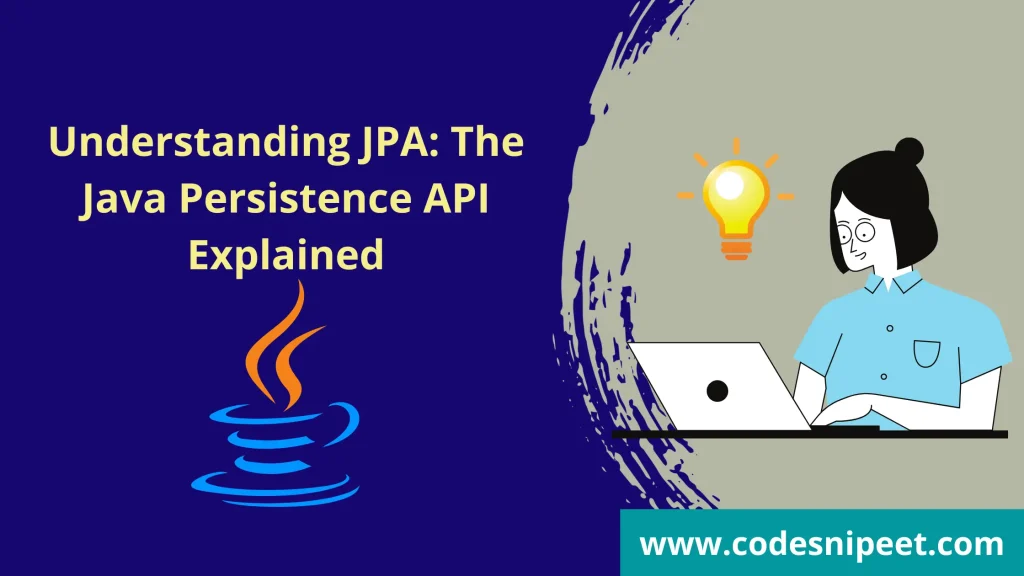JPA stands for Java Persistence API. It is a specification for accessing, managing, and persisting data between Java objects and relational databases. JPA provides a set of interfaces and annotations that define a standard way of working with object-relational mapping (ORM) in Java.
The main goal of JPA is to simplify the development of the data access layer in Java applications by providing a high-level, object-oriented API for working with databases. It abstracts away the details of the underlying database and provides a uniform interface for interacting with different database vendors.
JPA defines a set of concepts and features that include:
- Entity Classes: JPA introduces the concept of entity classes, which are plain Java classes that represent objects that can be stored in a database. These classes are annotated with annotations such as
@Entity,@Table, and@Columnto define their mapping to database tables and columns. - EntityManager: The EntityManager is the central interface in JPA for performing database operations. It provides methods for persisting, retrieving, updating, and deleting entities. The EntityManager is responsible for managing the persistence context, which represents the set of entities being managed within a transaction.
- Object-Relational Mapping (ORM): JPA provides mechanisms for mapping Java objects to relational database tables. It supports various mapping strategies, including mapping fields or properties to columns, mapping relationships between entities, and handling inheritance hierarchies.
- JPQL (Java Persistence Query Language): JPA includes its own query language called JPQL, which is similar to SQL but operates on Java objects instead of database tables. JPQL allows you to write queries using entity and property names rather than SQL tables and columns.
- Transaction Management: JPA integrates with Java’s transaction management APIs, such as Java Transaction API (JTA) and Java Transaction Service (JTS), to provide support for transactional operations. It allows you to define and control transactions when working with persistent entities.
JPA is a specification, and to use it in your Java application, you need to have an implementation of the JPA specification. Some popular JPA implementations include Hibernate, EclipseLink, and Apache OpenJPA. These implementations provide the underlying functionality to map Java objects to database tables and handle the persistence operations defined by the JPA specification.
Overall, JPA simplifies the development of data access layer in Java applications by providing a standardized and object-oriented approach to working with databases. It promotes code reusability, portability, and flexibility by decoupling the application logic from the underlying database implementation.
Latest posts for you:
- Java Collections Framework: A Complete Guide
- Understanding the Difference Between HashSet and TreeSet in Java
- Understanding the Difference Between HashMap and HashTable in Java
- Understanding the Difference Between Heap and Stack Memory in Java
- HashMap vs TreeMap in Java: A Comprehensive Comparison
